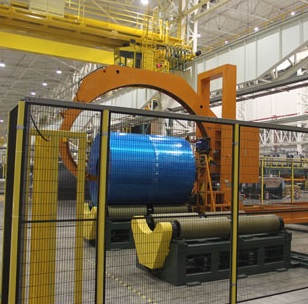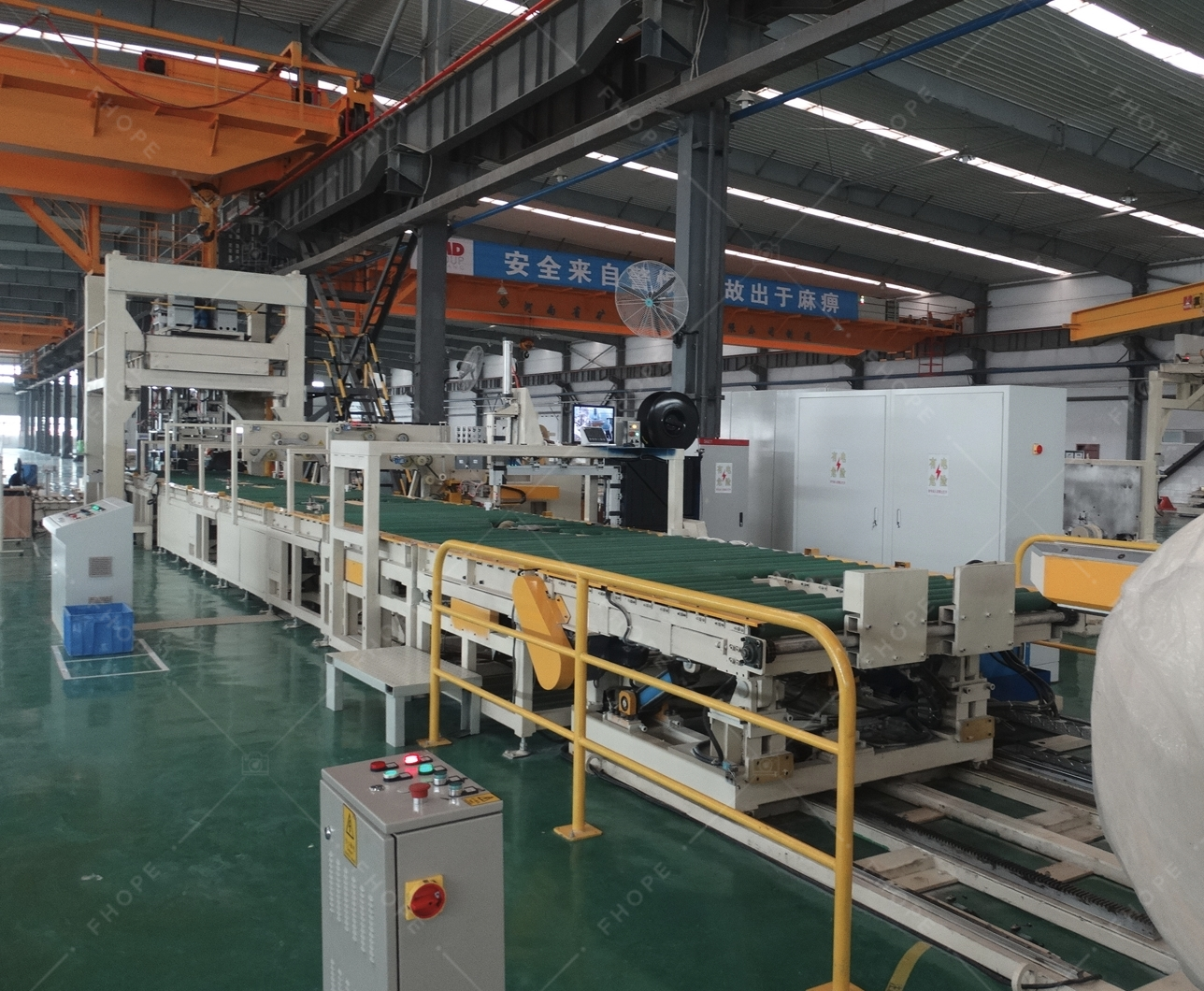Mastering Efficiency: A Comprehensive Guide to Automatic Coil and Slit Packaging Lines
In modern manufacturing and logistics, particularly within the metals industry, handling and packaging coils and slit strips efficiently and safely is paramount. Automatic Coil and Slit Packaging Lines represent a significant technological advancement, offering automated solutions for wrapping, strapping, and preparing these materials for storage and transport. This guide delves into the functionality, benefits, and key considerations of these essential systems.
What are Automatic Coil and Slit Packaging Lines?
Automatic Coil and Slit Packaging Lines are integrated systems engineered to automate the entire process of packaging metal coils (like steel or aluminum) and narrower slit strips derived from master coils. They replace manual or semi-automated methods, streamlining operations in demanding industrial environments such as steel service centers, metal processing plants, and high-volume logistics hubs.
These lines typically combine several key pieces of equipment working in unison:
- Conveyor Systems: Transport coils smoothly through the different packaging stages.
- Wrapping Stations: Apply protective materials like stretch film or VCI paper.
- Strapping Stations: Secure the coil circumferentially or through the eye using steel or PET strapping.
- Stacking/Down-ending Stations: Prepare the packaged coils for final storage or shipment.
- Control Systems (PLC): Coordinate the actions of all components for seamless operation.

stainless steel coil packing machine line1 How Does an Automatic Coil Packaging Line Work? (The Process Explained)
While specific configurations vary, a typical automated coil packaging process follows these steps:
- Loading: Coils or slit strips are placed onto the infeed conveyor system, often via cranes, forklifts, or automated guided vehicles (AGVs).
- Conveying: The system transports the coil to the first processing station. Sensors detect the coil's presence and dimensions.
- Wrapping: At the wrapping station, a specialized coil wrapping machine applies layers of protective stretch film, VCI paper, or other specified materials around the coil's circumference or through its eye, depending on the requirement. This shields the metal from moisture, dust, and physical damage.
- Strapping: The wrapped coil moves to the strapping station. Automatic strapping heads apply and tension steel or PET straps at predetermined positions (radially or through-eye) to secure the coil and prevent unwinding.
- Labeling (Optional): An automated labeling system may apply identification tags or shipping labels.
- Stacking/Discharge: Finally, the fully packaged coil is moved to an output conveyor, potentially tilted or stacked by automated equipment, ready for removal and dispatch.

automatic coil packing line Key Components and Technologies
- Coil Cars & Turnstiles: Used for safe and efficient loading and positioning of heavy coils onto the line.
- Conveyor Rollers: Heavy-duty rollers designed to withstand the weight and abrasion of metal coils.
- Orbital Stretch Wrappers: Machines that pass a film carriage around the coil to apply stretch film efficiently.
- Automatic Strapping Heads: Sophisticated units that feed, tension, seal, and cut strapping material automatically. Different heads are used for steel or PET strapping.
- PLC & HMI: Programmable Logic Controllers (PLCs) manage the sequence and logic, while Human-Machine Interfaces (HMIs) provide operator control and monitoring.
Benefits of Implementing Automated Coil Packaging
Automating the coil packaging process yields significant advantages:
- Enhanced Efficiency: Drastically reduces the time required to package each coil compared to manual methods, increasing overall throughput.
- Improved Consistency: Ensures every coil is packaged to the same standard, using consistent material amounts and strapping tension, leading to reliable protection.
- Superior Product Protection: Automated wrapping and strapping provide robust protection against environmental factors (moisture, dust) and handling stresses during transit and storage, minimizing damage claims.
- Increased Safety: Reduces manual handling of heavy coils and interaction with potentially hazardous strapping materials, improving workplace safety.
- Reduced Labor Costs: Frees up personnel from repetitive manual packaging tasks, allowing them to focus on higher-value activities.
- Optimized Material Usage: Precise application of film and strapping minimizes waste compared to manual guesswork.
Customization and Considerations
Automatic coil and slit packaging lines are rarely off-the-shelf solutions. They are typically customized based on:
- Coil Dimensions: Handling range for inner diameter, outer diameter, width, and weight.
- Slit Strip Handling: Specific requirements for packaging narrow, potentially unstable slit coils.
- Packaging Materials: Compatibility with required stretch film types, VCI paper, edge protectors, etc.
- Strapping Needs: Type (steel/PET), number, and orientation (radial/through-eye) of straps.
- Throughput Requirements: The number of coils needing packaging per hour or shift.
- Available Space: The physical footprint required for the line layout.
- Integration: How the line connects with existing upstream and downstream processes.

Caption: An automatic coil stretch wrapper applying protective film.
![Integrated automatic coil packaging line with conveyor and strapping station]

Caption: View of an integrated automatic coil packaging line.
The Vital Role of Strapping Equipment
Strapping is critical for maintaining coil integrity. Automatic strapping equipment within the packaging line ensures:
- Security: Prevents coils from unwinding or shifting during handling.
- Load Stability: Helps secure coils on pallets or during transport.
- Proper Tension: Applies the correct amount of tension without damaging the coil edges. Common types include steel strapping for heavy-duty applications and PET strapping, which is often preferred for safety and resistance to rust. (For more on material science, see resources like the [World Steel Association].
Conclusion
Automatic coil and slit packaging lines are indispensable assets for modern metal producers, processors, and service centers. By automating the wrapping and strapping processes, these systems deliver significant improvements in efficiency, packaging quality, safety, and cost-effectiveness. Investing in a well-designed automated packaging line tailored to specific operational needs is crucial for protecting valuable coil products and streamlining the supply chain.
